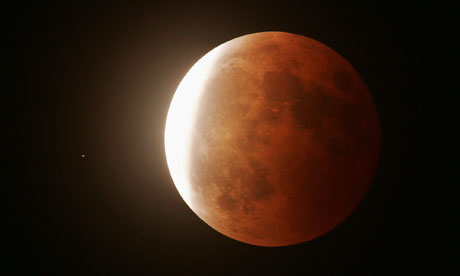Lunar eclipse and winter solstice to coincide for first time in 372 years
Tomorrow's lunar eclipse over Britain will fall on the shortest day of the year – the winter solstice – for the first time since 1638Share

The skies over Britain will turn a dark shade of red tomorrow morning as the moon moves into the Earth's shadow in a rare lunar eclipse.
A total lunar eclipse occurs when the sun, Earth and moon are almost exactly in line, with the moon and sun on opposite sides of our home planet.
The alignment will cause the full moon to appear much dimmer than usual, but sunlight passing through the Earth's atmosphere will give the lunar surface a deep reddish hue at dawn.
The eclipse is due to begin at 5.28am, as the moon enters the lightest part of Earth's shadow, known as the penumbra.
In this early phase of the eclipse, the moon will appear yellowish in the pre-dawn sky.
A more significant dimming begins as the moon enters into the darker part of Earth's shadow at 6.32am and becomes completely eclipsed at 7.40am.
Unlike an eclipse of the sun, star gazers do not need protective eye equipment to observe a lunar eclipse.
For the first time in nearly 400 years the lunar eclipse coincides with the winter solstice, the shortest day of the year.
In addition, both sun and eclipsed moon will briefly be visible above the horizon – cloud cover permitting – in an unusual event called a selenehelion.
In London, the moon will be only three degrees above the northwestern horizon and may be obscured by buildings.
It will appear higher in the sky in Northern Ireland and the Western Isles of Scotland.
During the eclipse, the moon will be in line with the constellation of Taurus, though these stars will be hard to see in the dawn sky and will be invisible after sunrise.
Ian Sample
No comments:
Post a Comment